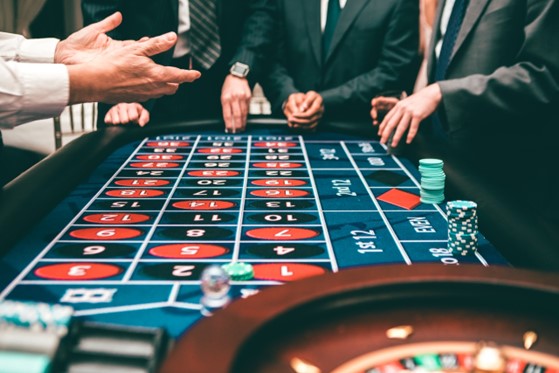
I learned this today. The gambler’s fallacy is the belief that a random event is more or less likely to happen based on the outcome of a previous event. For example, if a coin is flipped ten times and it comes up heads ten times, the gambler will believe that heads is less likely on the eleventh flip because all of the previous flips have been heads, despite there being no connection between them.
It’s called the gambler’s fallacy because it is a condition that tends to affect gamblers. If someone is playing roulette and red has come up five times in a row, the gambler may believe that makes red more likely to come up again. Or, conversely, red less likely to come up the next time. It is obviously a condition that all humans have, but it is more detrimental to gamblers. It is also sometimes called the Monte Carlo Fallacy, after the casino at Monte Carlo.
The name Monte Carlo Fallacy comes from an event on August 18, 1913, when the ball in the roulette wheel fell on black 26 times in a row. The probability of that is 1 in 66.6 million. However, that is the reason behind this fallacy.
The gambler’s fallacy goes like this: If the roulette ball has fallen on black ten times in a row, people calculate the odds of that at 1 in 1024. (To simplify things, I’m taking the odds of red or black coming up as 50/50, which they aren’t. The odds are actually 47.4% because there is a green 0, which isn’t red or black.) The gambler then calculates the odds of the roulette ball landing on black again, an 11th time, as 2048 to 1. The gambler sees this as increasingly unlikely, and bets red. The ball lands on black and the gambler loses. When the ball landed on black 26 times in Monte Carlo, gamblers calculated the odds that it would land on black a 27th time as 1 in 134 million. An extremely unlikely event.
But that is where they are wrong and that is the fallacy. The odds that the ball would land on black on the 10th spin were 50/50. The odds that the ball would land on black on the 11th spin were also 50/50. The odds that the ball would land on black on the 26th spin, the 27th spin, or the 100th spin, are always 50/50.
The odds of 27 blacks in a row are extremely high, but that is not important because the ball and the roulette wheel have no memory. At each point that the wheel is spun, the odds revert to 50/50.
And the odds of getting a streak of 27 blacks in a row might be high, but that doesn’t mean it won’t happen. An average roulette table is spun about 1000 times per day. 365,000 times a year. Multiply that by the number of casinos playing roulette in the world, (3,547 registered casinos in 2011) and you get 1.3 billion spins a year. A streak of 27 blacks at a roulette table should happen every few years somewhere in the world.
The gambler’s fallacy is a cognitive bias and is caused by three things. Firstly, evolution has made us able to spot patterns and use those patterns to determine the likelihood that an event will happen again in the future. We don’t like randomness and so we try to rationalize order upon it and make it seem more predictable. For example, when tossing a coin, people think that H-T-T-H-T-H-T is far more likely than H-H-H-H-H-H-H, despite the odds for both of these sequences being 1 in 128.
Secondly, because we fall foul of the law of small numbers. We believe that a short sequence of outcomes will be representative of the process as a whole. People playing roulette may watch the table a few times and make their bets. They saw the table come up red-black-black-red-black. They expect this very small sample size to continue, but of course that is not correct. The table has been spinning for hundreds of thousands of times and amongst those hundreds of thousands of spins, there will be very long strings of one color. The table comes up with a string of reds and the gambler thinks, “What? But, it just came up red-black-black-red-black!”
This is shown when people are asked to write down a list of random heads and tails. They invariably balance it to be about 50/50 and they have very few long streaks. But that is not random. If you really flip a coin 100 times, you may get some long streaks.
The third reason is that we believe chance to be fair and self-correcting. If chance takes things too far in one direction, we believe it will readdress the balance later on. A person having a losing streak on a slot machine will keep playing because they believe that their “luck must change soon” because chance is fair and everything balances. However, chance, and the universe are not fair, they are purely random. The slot machine player’s luck may change, but it also may not. And that is the gambler’s fallacy.
The gambler’s fallacy helps casinos to make billions of dollars every year. It is a fascinating psychological condition and is the main reason why I don’t gamble. And this is what I learned today.
Photo by Javon Swaby from Pexels: https://www.pexels.com/photo/people-playing-poker-3279695/
Sources:
https://www.investopedia.com/terms/g/gamblersfallacy.asp
https://en.wikipedia.org/wiki/Gambler%27s_fallacy
https://en.wikipedia.org/wiki/Faulty_generalization#Hasty_generalization
https://thedecisionlab.com/biases/gamblers-fallacy
https://byjus.com/coin-toss-probability-calculator/
https://www.casino.org/roulette/odds/
https://www.gamblingsites.com/blog/17-facts-about-roulette-that-will-surprise-your-friends-12024/
https://www.statista.com/statistics/221031/total-worldwide-casinos-by-region/
